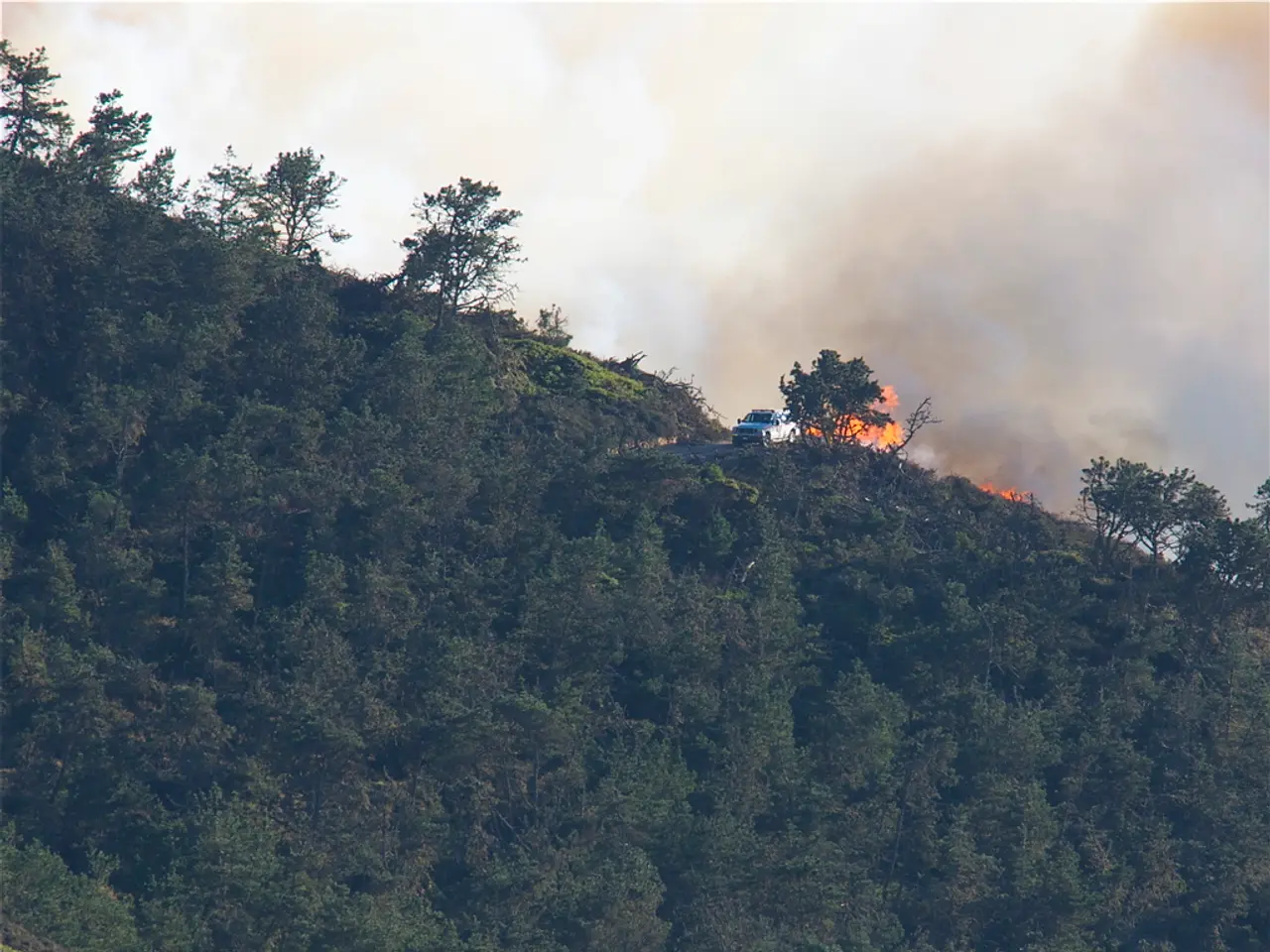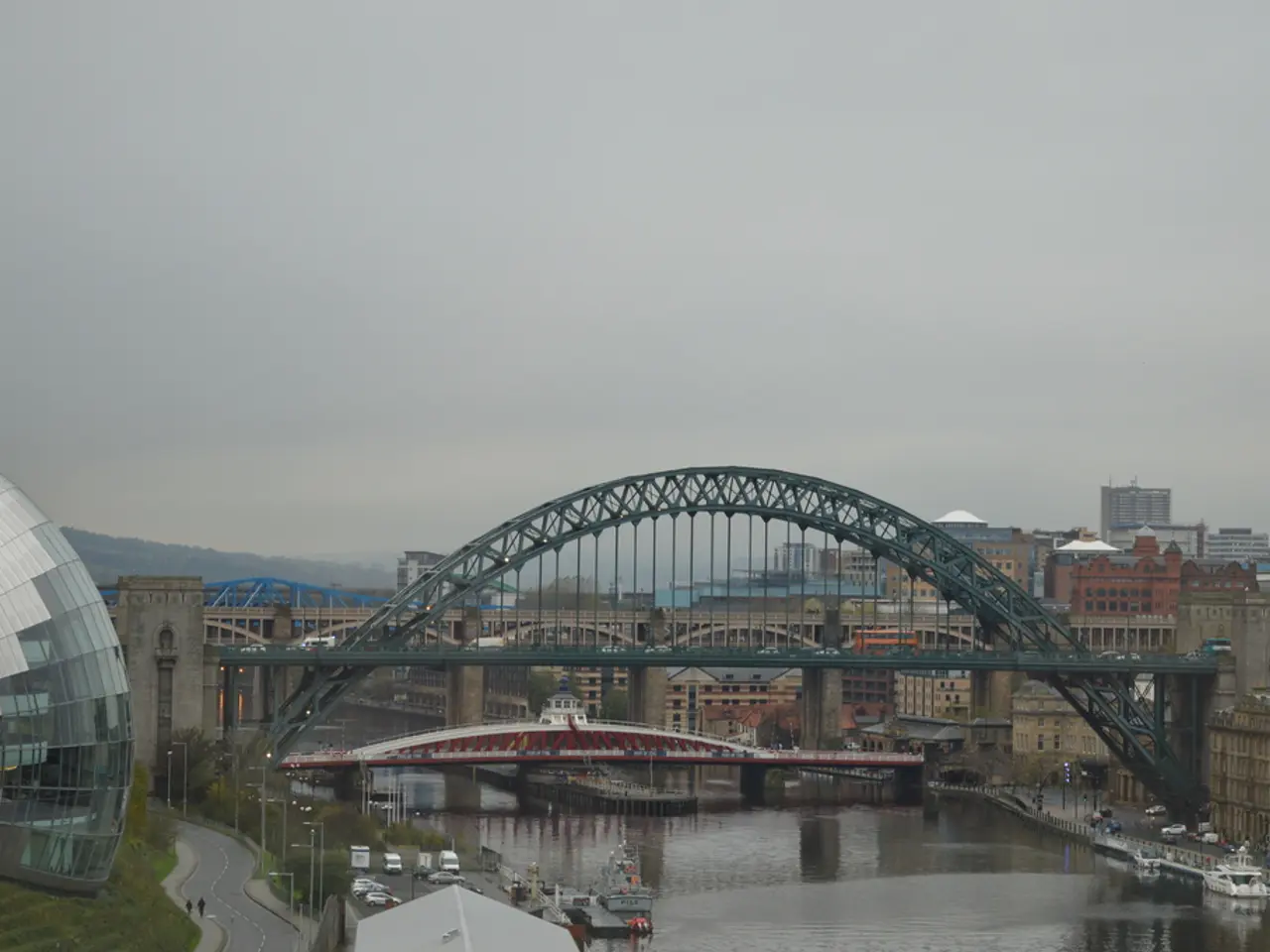Raging wildfire, largest in California this year, continues to expand
Gifford Fire Rages on as Largest Wildfire in California
The Gifford Fire, currently the largest wildfire in California, is actively burning in the central part of the state, affecting San Luis Obispo and Santa Barbara counties near Highway 166, northeast of Santa Maria. As of Tuesday evening, the fire has scorched approximately 118,068 acres (185 square miles) and is 33% contained [1][2].
The fire originated on August 1, 2025, from four separate ignitions along Highway 166 that merged into one large wildfire [3]. The exact cause of the Gifford Fire is still under investigation [1][2].
The fire has posed a significant threat to the region, with nearly 3,000 structures under threat, and evacuation orders in place for many zones in both counties [1][2]. So far, the fire has destroyed 2 structures and caused injuries to civilians and firefighters [1][2].
The incident command for the Gifford Fire is a unified effort involving CAL FIRE, Los Padres National Forest, Santa Barbara County Fire Department, Sheriff's Office, and California Interagency Incident Management Team 5 [1][2][3].
The Gifford Fire is not an isolated incident. Since the Los Angeles wildfires, Cal Fire has reported numerous other fires. Over 150 square kilometers of land were destroyed in the Los Angeles wildfires, and more than 16,000 buildings were destroyed [1].
While heat does not directly cause wildfires, high temperatures combined with dryness, low humidity, and wind can increase the risk. Besides discarded cigarettes, dragging car parts or worn-out brakes can cause sparks and ignite fires [1].
The Gifford Fire is one of the many fires reported by Cal Fire this year. In the beginning of the year, devastating wildfires in the Los Angeles metropolitan area claimed at least 31 lives [1].
In July, the Madre Fire in the same area burned about 327 square kilometers [1]. High temperatures, exceeding 30 degrees Celsius, are making firefighting efforts difficult, and temperatures could exceed 37 degrees Celsius on Thursday [1].
The New York Times reported the possible human cause of the Gifford Fire [2]. Despite the ongoing efforts of nearly 2,300 personnel battling the Gifford Fire, the fire has only been contained to 9% so far [1].
The Gifford Fire in central California is currently the largest wildfire in the US West Coast state, underscoring the urgent need for continued vigilance and effective firefighting strategies to protect lives, properties, and the environment.
[1] Cal Fire Incident Information System (Cal Fire IIS) [2] The New York Times [3] Santa Barbara Independent
Science and weather play a significant role in the Gifford Fire, as high temperatures, dryness, low humidity, and wind contribute to the fire's rapid spread. Furthermore, environmental-science studies could provide valuable insights into the impact of climate-change on the frequency and intensity of wildfires like the Gifford Fire.








